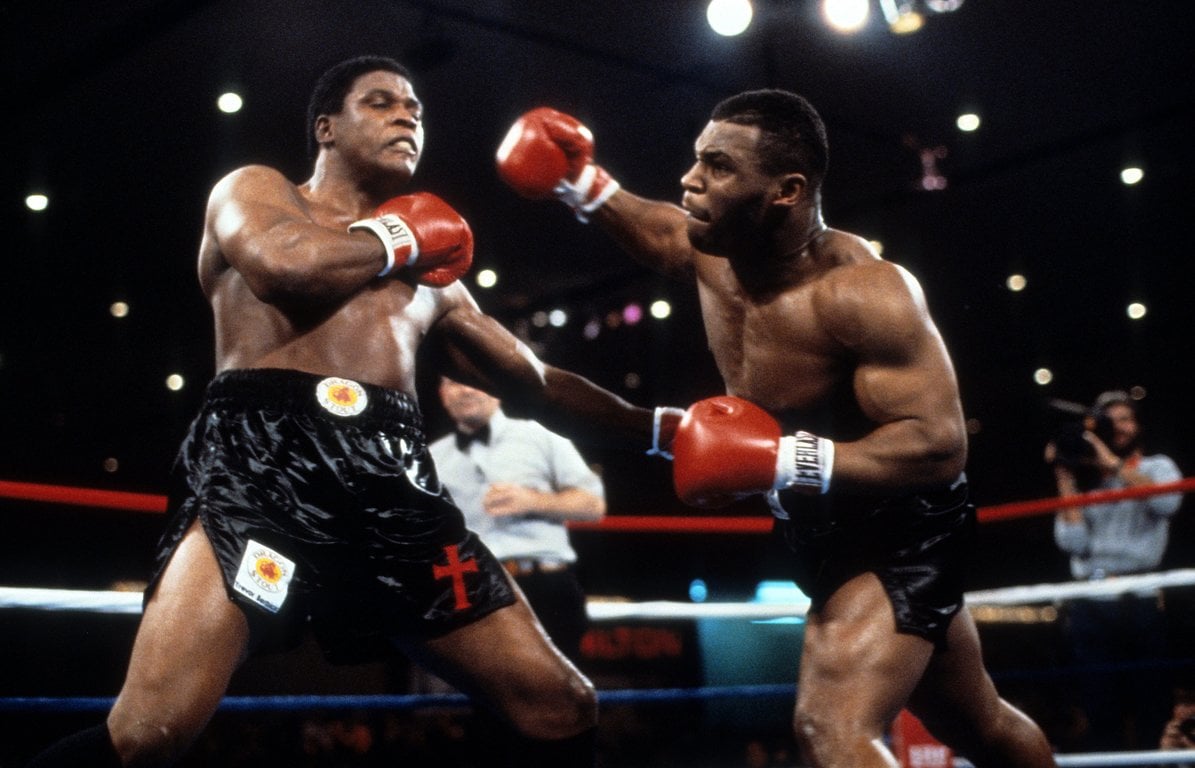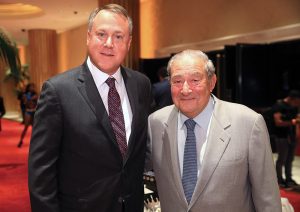The New Order and the Future of Boxing: Part One

The September 27 announcement from HBO Sports that the network will discontinue live boxing programming at the close of this year marks the end of an era.
Gillette’s fabled Friday Night Fights were on television for a little more than a decade. HBO’s boxing programming spanned 45 years.
No one did it as well as HBO when HBO Boxing was at its best. Given the difficulty in making truly big fights today, it’s unlikely that anyone will do it as well in the near future either.
There was a time when HBO – as its slogan heralded – was “the heart and soul of boxing.” It served as a de facto commissioner for the sport and was the most powerful force in the sweet science. HBO made the mega-fights that fans wanted to see happen. At its best, it was wired into the brain of virtually every boxing fan in America.
At the turn of the millennium, the annual budget for HBO Sports was just under $150 million. Ninety million of that was allocated to boxing. Adjusted for inflation, $150 million in 2000 would equal $225 million today. In recent years, due to budget cuts, HBO Sports has spent roughly ten percent of that amount on license fees for fights. The times have been changing.

Mike Tyson, here attacking Trevor Berbick in 1986, only fought on HBO during his prime years and meteoric rise to the top of the boxing world. Photo by THE RING
Boxing was a key factor in building HBO’s subscriber base in the 1980s and 1990s. But sports was never HBO’s core product. By and large, viewers subscribed to the network for movies and other scripted entertainment.
HBO built its reputation on unique programming. Shows like The Sopranos, Sex and the City, and Game of Thrones went where no network had gone before. So did HBO’s once-innovative brand of boxing coverage. But as HBO Sports executive vice president Peter Nelson observed this week, there’s very little that’s unique about boxing programming on any network today. In some cases, it’s very good. But it’s no longer unique.
Also, the world of boxing no longer lends itself to the level of excellence that HBO Sports achieved in the past. Boxing’s current economic model works against giving the public competitive fights at the elite level. The days when superstars like Ray Leonard, Marvin Hagler, Thomas Hearns and Roberto Duran went in tough fight after fight against one another are gone. The fights that boxing fans most want to see simply don’t happen anymore. There’s more boxing on television and streaming video today than ever. But very few of these fights will be remembered as legendary nights years from now.
We’re living in an age of vertical integration and corporate consolidation. The path to power in today’s economy lies through the merger of powerful economic interests.
The value of a sports entity as a business today is driven in large part by its television contract. ESPN closed a five-year deal this past May that will pay $1.5 billion to UFC over a five-year period beginning in January 2019. In the same stratospheric environment, NBCUniversal will pay $265 million a year for five years to WWE for Raw. Fox will pay WWE $205 million a year for five years for Smackdown. That’s a total of $2.34 billion for WWE.
Content providers in boxing have long partnered with delivery systems. In the early years of ESPN (the delivery system), Top Rank was the network’s exclusive provider of boxing content. To acquire the rights to televise Mike Tyson’s fights, Showtime (the delivery system) agreed to buy boxing matches exclusively from Don King (the content provider).
The trend in media today is toward the consolidation of content providers and the deliverers of content. In boxing, content providers (e.g. Top Rank, Premier Boxing Champions, and Matchroom) are partnering with delivery systems (ESPN, Showtime/Fox, and DAZN).
These partnerships give the content providers (promoters) significant leverage in pursuing fighters because they guarantee that the promoters will have television dates to showcase fighters and the money to sign them.

Anthony Joshua’s IBF/WBA/WBO heavyweight title defense against Alexander Povetkin, on September 22, won’t be seen on Showtime or HBO. It will only be available on DAZN’s new streaming service in the U.S.
There are two dominant alliances in boxing in the United States today: ESPN-Top Rank and PBS-Showtime-Fox. DAZN-Matchroom is bidding to become the third.
There’s more money in boxing now than ever before, and much of it is tied to streaming video. In recent years, some small free-of-charge cards and niche pay-per-view fights that barely registered with boxing fans were distributed by streaming video. Streaming video was also a source of ancillary income for a handful of major pay-per-view events.
Now streaming video is a major component of ESPN’s business plan. It’s the sole means of distribution for all content on DAZN. PBC’s alliance with Showtime and Fox relies heavily on more traditional delivery systems. But streaming video plays a role in PBC shoulder programming and is expected to rise in importance in the years ahead.
Relatively few boxing fans paid attention to streaming video in the past. They’re paying attention now. It’s ushering in a new era for the sweet science and, most likely, for all sports.
Each of the major alliances on the boxing scene has its own narrative. Let’s start with ESPN and Top Rank.
On August 9, 2017, the Walt Disney Company unveiled plans for a direct-to-consumer ESPN subscription streaming video service to be called ESPN+. Thereafter, ESPN entered into an exclusive four-year contract with Top Rank to provide boxing content for various ESPN platforms including ESPN+.
ESPN+ is priced at $4.99 a month and debuted in April of this year. Four months later,

Bob Arum (right) and ESPN’s executive vice president of programming Burke Magnus are a happy team.
ESPN and Top Rank announced that their 2017 contract had been replaced by a new agreement that runs through August 2025. This deal provides for 54 live boxing cards annually in addition to other boxing-related programming. The 54 live boxing cards will be broken down as follows: 18 on ESPN, 12 on ESPN+, and 24 “premium international events” on ESPN+. Undercard coverage for each event will be streamed on ESPN+.
Top Rank is sitting pretty. Manny Pacquiao carried the promotional company through what otherwise would have been some lean years. Now Top Rank has the weight of ESPN behind it. And it’s no longer dependent on network programmers for dates. It can put individual fighters on the air as often as it likes.
Top Rank has an annual budget from ESPN. Todd duBoef, president of Top Rank, says, “We’ll give fans a range of fights from small fights to championship bouts on both ESPN and ESPN+. The content on one platform will not be better than the other. We’ll balance the platforms.”
Top Rank’s boxing programming will also air on ESPN Deportes. Pay-per-view telecasts for mega-fights are likely down the road. And ABC (another Disney entity) could be drawn into the mix.
The ESPN deal has enabled Top Rank to move aggressively in the marketplace. On August 6, it announced that it had signed Terence Crawford to a new multi-year contract. It has put large numbers on the table to acquire rights to fights from other promoters such as the upcoming rematch between Eleider Alvarez and Sergey Kovalev. On September 11, Top Rank announced a multi-year licensing agreement with Frank Warren’s Queensberry Promotions as part of the aforementioned 24 international events. Tyson Fury (Warren’s most notable fighter) is not part of the deal between Queensberry and Top Rank.
Premier Boxing Champions tried to reposition boxing to attract mainstream sports fans but has fallen short of expectations to date. Top Rank and ESPN are better positioned to succeed in this quest.
Combat sports is only a small part of what ESPN and ESPN+ offer. The network is the most powerful sports platform in the world and a direct pipeline to every sports fan in America.
Top Rank’s venture with ESPN will make boxing part of the daily conversation on ESPN. It will put boxing on multiple platforms that have the attention of general sports fans and use these platforms to broaden boxing’s fan base while, at the same time, reaching those already in the choir.
In that regard, duBoef says, “We want a model for boxing that’s more like the model for other live sports. We’ll have enough boxing content in addition to live fights to keep the lights on all the time. That’s what other major sports do, and that’s what we should do in boxing.”
The classic shoulder programming for boxing was HBO’s 24/7, which was designed to engender pay-per-view buys for big fights but became a viewing destination in its own right. Top Rank and ESPN are banking on the belief that they can have similar success, including programming that revolves around the rebroadcast of classic fights. Very few people turn on the television to watch a rebroadcast of an old Super Bowl in its entirety. But they will watch historic encounters like Ali-Frazier III, Leonard-Duran, and Hagler-Hearns as well as other out-of-the-ring boxing programming.
ESPN sees streaming video as an important part of its business model for the future and a way to recapture some of the cord-cutters who have left the network in recent years. If it takes five or ten years for ESPN+ to become profitable, so be it.
This is part one of “The New Order and the Future of Boxing;” click here to read part two and part three.
Thomas Hauser can be reached by email at [email protected]. His next book – Protect Yourself at All Times – will be published by the University of Arkansas Press this autumn. In 2004, the Boxing Writers Association of America honored Hauser with the Nat Fleischer Award for career excellence in boxing journalism. He is currently a consultant for HBO Sports.














